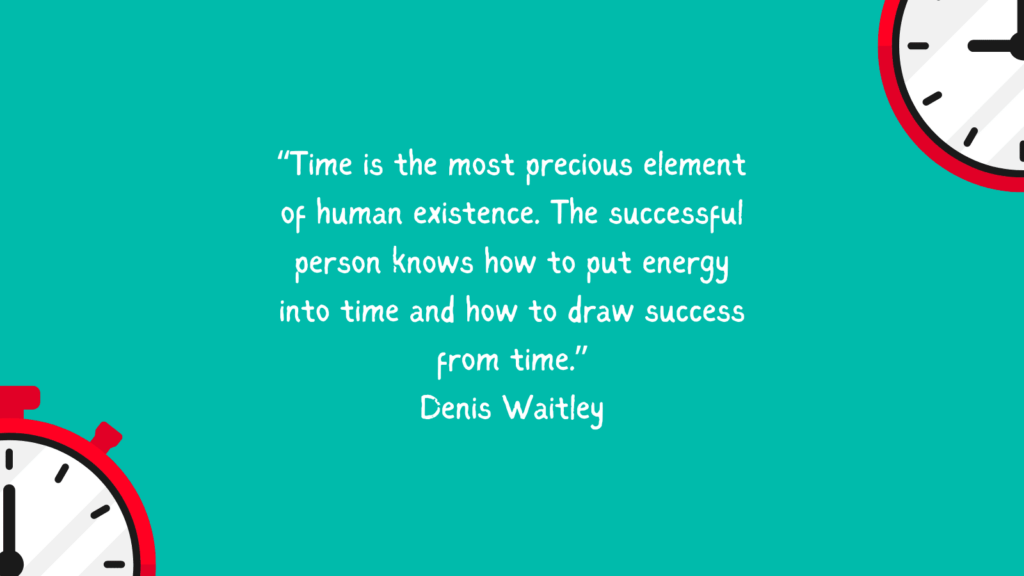Time blocking is especially helpful if you find yourself jumping around from task to task, leaving a string of half-finished projects in your wake… or you feel like you’re constantly playing defense against what feels urgent, but struggle to make progress on the things that will have the most impact.
In other words, you’ll become proactive about your time, rather than reacting to all the balls thrown your way. And at the end of the day, you’ll have margin to spare!
What is Time Blocking?
Time blocking is exactly what it sounds like—you “block off” a portion of your day with a specific start and end time.
You can dedicate that block to…
- a certain event,
- one of your daily routines,
- a specific task,
- or a set of tasks.
It’s that simple!
Lest you have nightmares of following a rigid minute-by-minute schedule with only 5 minute breaks in-between, let me assure you—assigning a time to everything you do in a day is NOT realistic. I don’t recommend it!
There’s actually a sister strategy to time blocking called task batching that groups smaller, similar tasks into ONE time block.
This saves you from scheduling every little task, like folding laundry, into your calendar. You can just add it under the HOME time block along with meal prep and cleaning.
By knocking out a bunch of similar tasks at once, you save a ton of time working in the same “mode” rather than jumping back and forth between unrelated tasks.
If you want to make the most of time blocking and be successful with it long term, the following best practices are essential to follow!
1. Ideally, you want to make sure each time block is at least one hour or more so you don’t break up your day in teeny tiny 15-30-minute increments. The more you micromanage your schedule, the more frustrated you’ll be when things don’t go according to plan! The only time I would break this “rule” is if there’s an activity or task that won’t get done unless you assign a time block (like a 30-minute workout).
2. Tailor your time blocks to how your energy levels ebb and flow throughout the day. For me, the two-hour window from 10 am-12 pm every day is when I’m most awake and able to concentrate. That makes it the perfect place to add a Tiger Time block. But by 3 pm, I’m losing steam, which is why I tackle things like email in the afternoons instead of bigger projects that require major attention.
If you’re curious what your best time block is, you can track your energy levels using this FREE Notion template.
3. Leave white space between blocks. Give yourself transition periods between blocks where you don’t have anything scheduled. This will help you maintain a realistic plan of action for your day. It’s always better to be under schedule than over schedule!
Likewise…
4. Always schedule in more time than you think the task or project will take. This eliminates overwhelmed AND disappointment when you get interrupted or don’t get everything done like you thought you would. It might be helpful to track your time for certain tasks (I use the app ATracker) so you know how much time to block off.
5. Set timers, but only if they WON’T stress you out! Use your built-in phone reminders to ding 15 minutes before a block is done as a reminder to wrap things up and get ready for the next block.
Want to level up your productivity? Try combining time-blocking with this Pomodoro Timer App!
Remember, time blocking is a framework! And it should be flexible enough for you to arrange as you please depending on the day.
If at any time, your time-blocking schedule causes undue pressure, look through the best practices above and see if you need to retool anything a bit.
My guess is you’ll need to add more margin or buffer into your blocks for that extra breathing room, but after a few weeks, the anxiety about how much you have to get done will lessen and you’ll feel more in control of your time!
This article was written by Kalyn Brooke, a Mindful Productivity expert. Learn more about her at https://kalynbrooke.com/about/.
